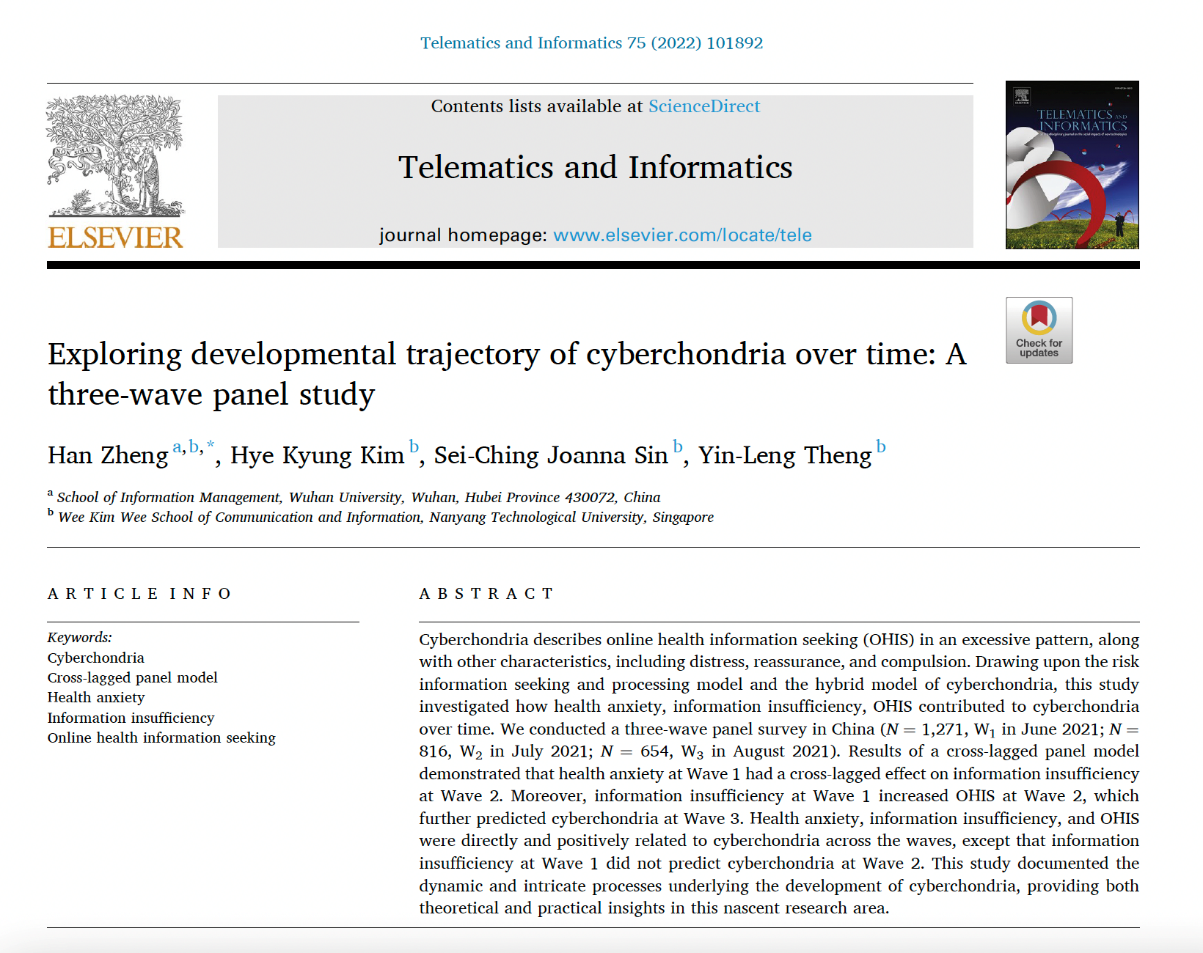Recently, the articleExploring developmental trajectory of cyberchondria over time: A three-wave panel studywaspublished in the Volume 75 ofTelematics and Informatics, a top-tieredjournal in the field of Library and Information Science.
The article’s first author andcorresponding author isHan Zheng, an associate professor at our School, and the co-authors areKim Hye Kyung, an associate professor at the Wee Kim Wee School of Communication and Information, Nanyang Technological University,Joanna Sin Sei Ching, an associate professor at the Wee Kim Wee School of Communication and Information, Nanyang Technological University,Theng Yin Leng, Professor of Information Studies at the Wee Kim Wee School of Communication and Information, Nanyang Technological University.

The article focused on cyberchondria. Cyberchondria refers to the symptom that an individual's anxiety level increases because he repeatedly searches for information related to diseases and health on the Internet. The psychological state of hypochondriasis will lead to the decline of work and study ability, and even affect daily life. In recent years, the phenomenon of cyberchondria has been widely concerned by scholars and health experts. Although previous studies have found a series of psychological factors that affect cyberchondria, such as health anxiety, unbearable uncertainty, cognitive bias, etc. however, few studies have explored the developmental trajectory of cyberchondria over time; This issue is very important for the in-depth analysis of the process of cyberchondria.
Han Zheng’s research is based on the risk information seeking and processing model, and the hybrid model of cyberchondria, and explores the relationship among health anxiety, information insufficiency, online health information seeking and cyberchondria.
The idea of this study is ingenious, and researchers conducted a three-wave panel survey at different times to collect data and test the hypotheses put forward in the study. By using the cross-lagged panel model, it is found that health anxiety at Wave 1 had a cross-lagged effect on information insufficiency at Wave 2. Moreover, information insufficiency at Wave 1 increased online health information seeking at Wave 2, which further predicted cyberchondria at Wave 3. Health anxiety, information insufficiency, and online health information seeking were directly and positively related to cyberchondria across the waves. This study documented the dynamic and intricate processes underlying the development of cyberchondria, providing both theoretical and practical insights in this nascent research area.
Telematics and Informaticsmainly publishes academic articles on innovative theories and methods of the impact of digital technology on society, economy, geography, politics and culture. The journal’s impact factor was 9.14 in 2021, ranking the 4th among 84 journals in the field of Library and Information Science.
Links to the full text of the article:https://doi.org/10.1016/j.tele.2022.101892